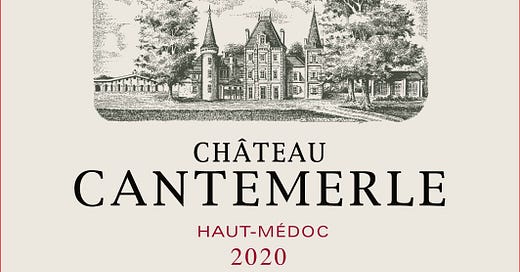Haut-Médoc is Bordeaux’s gateway to some of its most renowned appellations. Stretching from the northern border of Bordeaux city up to Saint-Estèphe, Haut-Médoc forms the foundation of the Left Bank’s terroir and is home to a diverse range of wines. While it might not carry the immediate prestige of Pauillac or Margaux, Haut-Médoc consistently produces wines of character and value, combining Bordeaux’s signature structure with a more accessible style. It’s a region known for reliable quality and represents an excellent introduction to Bordeaux for newer drinkers and a steady favorite for seasoned Bordeaux enthusiasts.
Primary Grape Varieties
Cabernet Sauvignon dominates, giving the wines structure, depth, and dark fruit flavors.
Merlot adds approachability and softness, rounding out the blend and balancing the tannins.
What Makes Haut-Médoc Special
Expansive Terroir - Haut-Médoc is a broad appellation, encompassing varied terroirs with gravelly soils that drain well and promote vine health. These soils are especially favorable for Cabernet Sauvignon, which thrives here, developing complex aromas and a sturdy tannic backbone.
Diverse Styles - Unlike the more focused appellations within it, Haut-Médoc’s wines show a range of expressions, from bold and age-worthy to approachable and ready-to-drink. This diversity allows Haut-Médoc to cater to a wide audience, offering both everyday drinking options and cellar-worthy bottles.
Tasting Notes for Blind Tasting
Haut-Médoc wines often display flavors of blackberry, plum, and cedar, with hints of earth and spice. Young wines will have firm tannins, while older examples develop a smooth texture and notes of leather and tobacco.
Quiz Time
How do the gravelly soils impact the structure of Haut-Médoc wines?
Why might Haut-Médoc be considered an excellent introduction to Bordeaux for new drinkers?
Premium Subscriber Content: The Character and Craft of Haut-Médoc
Terroir Insights
Haut-Médoc’s terroir is defined by its gravel soils, which create ideal conditions for Cabernet Sauvignon to develop concentration and structure. These soils encourage deep rooting, fostering resilience in the vines and enhancing the intensity of flavors in the wine.
Keep reading with a 7-day free trial
Subscribe to Daily Terroir: Exploring Wine Regions One Day at a Time to keep reading this post and get 7 days of free access to the full post archives.





